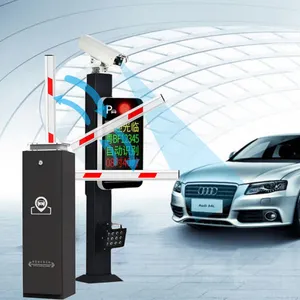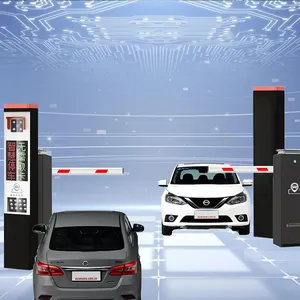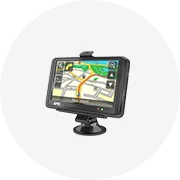Types of Paper Ticket Parking Systems
The paper ticket parking system remains a versatile and widely implemented method for managing parking spaces across various venues including shopping centers, airports, urban streets, and commercial facilities. Each system type offers specific advantages designed to enhance parking operations efficiency while improving user experience.
Industry Insight: Despite advances in digital parking technologies, paper-based systems continue to account for approximately 65% of all parking installations worldwide due to their reliability, cost-effectiveness, and minimal technical requirements.
Parking Garage Ticket System
This sophisticated system is primarily deployed in high-volume facilities like shopping malls, airports, and urban parking structures. The infrastructure includes:
- Entry machines with ticket dispensers
- Central control management unit
- Payment stations (manual or automated)
- Exit verification terminals
Key feature: Barcode/QR code integration for digital tracking while maintaining physical tickets
Pay-and-Display Parking System
Commonly implemented for street and surface lot parking management, this approach requires drivers to:
- Purchase parking permits from centralized machines
- Display the time-stamped ticket visibly on their dashboard
- Adhere to maximum time limits indicated on the ticket
Key feature: Simple implementation with minimal infrastructure requirements
Parking Lot Attendant Ticket System
This staffed system offers a personal touch with attendants who:
- Issue entry tickets manually
- Collect payment upon exit
- Provide security oversight
- Offer customer assistance
Key feature: Human interaction enhances security and service quality
Valet Parking Ticket System
A premium service option where attendants:
- Issue detailed receipts at vehicle drop-off
- Park vehicles in designated areas
- Retrieve vehicles upon ticket presentation
- Verify ownership through ticket matching
Key feature: Enhanced convenience with comprehensive vehicle information tracking
| System Type | Best Application | Cost Level | Personnel Required | Implementation Complexity |
|---|---|---|---|---|
| Parking Garage Ticket System | Large garages, commercial centers | High | Minimal (maintenance only) | Complex |
| Pay-and-Display System | Street parking, small lots | Low-Medium | Enforcement staff only | Simple |
| Attendant Ticket System | Private lots, events | Medium | Full-time attendants | Moderate |
| Valet Parking System | Hotels, restaurants, upscale venues | High | Multiple valet staff | Moderate |
Relative Market Share by System Type
Specifications of Paper Ticket Parking Systems
Technical Specifications
- Ticket Capacity: 2,000-5,000 tickets per standard dispenser
- Printing Technology: Thermal printing for durability and clarity
- Security Features: Watermarks, sequential numbering, tamper-evident designs
- Communication Protocols: Serial, Ethernet, wireless options
- Power Requirements: 110-240V AC with battery backup capabilities
- Processing Speed: 2-5 seconds per ticket issuance
Environmental Specifications
- Operating Temperature: -10°C to 50°C (14°F to 122°F)
- Humidity Tolerance: 5% to 95% non-condensing
- Dust/Water Resistance: IP54 rating for outdoor installations
- UV Resistance: Anti-fading materials for ticket longevity
- Paper Type: Standard thermal 80g/m² or environmentally friendly alternatives
Important Specification Consideration: When selecting a paper ticket parking system, ensure compatibility between ticket dispensers, payment stations, and validation equipment. Mismatched components can lead to operational failures and customer frustration.
| Component | Standard Specification | Premium Specification | Durability Rating |
|---|---|---|---|
| Ticket Dispenser | Single-feed, basic interface | Multi-feed, touchscreen interface | 5-7 years |
| Ticket Material | Standard thermal paper | Waterproof, tear-resistant | 1-30 days (varies by environment) |
| Payment Station | Cash only | Cash, card, mobile payment | 5-10 years |
| Barrier Gate | Manual release | Automatic with safety sensors | 7-10 years |
Maintenance of Paper Ticket Parking Systems
Maintenance Insight: Establishing a proactive maintenance schedule can reduce system downtime by up to 80% and extend equipment lifespan by 2-3 years compared to reactive maintenance approaches.
Regular Maintenance Procedures
- Daily Checks: Visual inspection of ticket dispensers, payment stations
- Weekly Tasks:
- Clean printer heads with compressed air
- Check ticket stock levels
- Test payment acceptance functionality
- Monthly Maintenance:
- Deep clean all equipment surfaces
- Lubricate moving mechanical parts
- Check and tighten electrical connections
- Quarterly Service: Full system diagnostic check by qualified technician
Troubleshooting Common Issues
- Ticket Jams:
- Power cycle the dispenser
- Clear paper path of debris
- Check for ticket alignment issues
- Reading Errors:
- Clean barcode scanner lenses
- Check ticket quality and printing clarity
- Test with known good tickets
- Payment System Failures:
- Verify network connections
- Check for payment processor outages
- Test with alternative payment methods
Software Updates and System Optimization
Maintaining optimal system performance requires regular software maintenance and periodic updates:
- Firmware Updates: Apply manufacturer-provided updates quarterly to address security vulnerabilities and performance improvements
- Database Maintenance: Purge old transaction records monthly to maintain system speed and efficiency
- System Backups: Implement daily automated backups of configuration settings and transaction data
- Performance Monitoring: Utilize system analytics to identify bottlenecks and optimize operational efficiency
Common Maintenance Issues by Frequency
How to Choose Paper Ticket Parking Systems
Selecting the optimal paper ticket parking system requires a methodical evaluation of your specific requirements, environmental factors, and operational constraints. This comprehensive selection framework will guide your decision process:
Operational Assessment
- Traffic Volume Analysis: Measure peak and average daily traffic
- Space Configuration: Evaluate layout constraints and entry/exit points
- User Demographics: Consider customer preferences and technical comfort
- Payment Preferences: Determine most commonly used payment methods
Financial Considerations
- Capital Expenditure: Initial equipment and installation costs
- Operational Expenses: Ongoing maintenance, supplies, staffing
- Revenue Potential: Pricing strategy compatibility
- ROI Timeline: Expected payback period and long-term value
Technical Evaluation
- System Reliability: Uptime statistics and failure rates
- Integration Capabilities: Compatibility with existing systems
- Scalability: Expansion potential for future growth
- Technological Adaptability: Upgradability to newer features
Implementation Factors
- Vendor Support: Training, troubleshooting, and ongoing assistance
- User Experience: Intuitive interfaces for both customers and staff
- Security Features: Fraud prevention and data protection
- Compliance: Adherence to local regulations and accessibility standards
Selection Tip: Request detailed system demonstrations and trial periods when possible. Speak with multiple existing customers of potential vendors to understand real-world performance and support experiences beyond marketing materials.
| Selection Criteria | Essential Questions | Priority Level |
|---|---|---|
| System Reliability | What is the mean time between failures? What redundancies are built in? | Critical |
| Total Cost of Ownership | What are all costs over 5 years including maintenance and supplies? | High |
| User Experience | How intuitive is the system for first-time users? What is the average transaction time? | High |
| Environmental Impact | What eco-friendly options are available? Can ticket usage be optimized? | Medium |
| Future Compatibility | How easily can the system integrate with emerging technologies? | Medium |
DIY Installation and Replacement of Paper Ticket Parking Systems
For facility managers and parking operators seeking to install or replace paper ticket parking systems independently, this structured approach provides a roadmap for successful implementation:
Step 1: System Assessment and Planning
- Evaluate current system deficiencies and operational bottlenecks
- Document traffic patterns and peak usage times
- Establish clear objectives for the new system (e.g., increased throughput, reduced maintenance)
- Create a detailed budget including contingency funds for unexpected issues
- Develop a timeline with minimal disruption to existing operations
Step 2: System Selection and Procurement
- Research compatible system options based on assessment findings
- Obtain multiple vendor quotes and compare specifications
- Review warranty terms and support agreements carefully
- Verify all components are designed to work together
- Order with sufficient lead time before planned installation
Step 3: Stakeholder Communication
- Develop clear messaging about the transition process and benefits
- Create instructional materials for staff and customers
- Establish communication timeline including advance notifications
- Prepare signage explaining new system operation
- Train staff thoroughly on new system features and troubleshooting
Step 4: Installation Execution
- Schedule installation during lowest-usage periods
- Prepare all necessary infrastructure (power, network, mounting)
- Follow manufacturer guidelines precisely for physical installation
- Test each component individually before full system integration
- Document all configuration settings and installation details
Step 5: System Optimization and Evaluation
- Monitor system performance during initial operational period
- Collect user feedback systematically
- Make adjustments to settings and procedures as needed
- Document lessons learned for future reference
- Establish ongoing maintenance and performance review schedule
Installation Warning: Unless you have specific electrical and technical expertise, always consult with a professional regarding power connections and network integration. Improper installation can create safety hazards and void warranties.
Frequently Asked Questions
Yes, paper ticket parking systems maintain strong relevance despite digital advances for several compelling reasons:
- Universal Accessibility: No smartphones or technical knowledge required for users
- Implementation Simplicity: Lower technical barriers for installation and maintenance
- Cost-Effectiveness: Typically 30-40% lower initial investment than fully digital solutions
- Reliability: Functions independently of network connectivity or power fluctuations
- Hybrid Potential: Many modern paper systems incorporate digital elements like QR codes for enhanced functionality
Paper-based systems remain particularly valuable in locations with diverse user demographics or unreliable infrastructure.
Modern paper ticket parking systems incorporate multiple security features that make them highly resistant to fraud and tampering:
- Sequential Coding: Unique identifiers and sequential numbering prevent duplication
- Physical Security Elements: Watermarks, holograms, and special printing techniques deter counterfeiting
- Validation Requirements: Electronic verification at payment points confirms ticket authenticity
- Time-Stamping: Precise entry/exit timing prevents reuse or manipulation
- Hybrid Security: Many systems combine physical tickets with electronic database tracking
When properly implemented and maintained, paper ticket systems provide security comparable to many digital alternatives while requiring less technical infrastructure.
The parking industry has developed several eco-conscious alternatives that minimize environmental impact while maintaining system functionality:
- Recycled Materials: Tickets made from 100% post-consumer recycled paper
- Biodegradable Options: Tickets using cornstarch-based or other biodegradable materials
- Sustainable Inks: Vegetable-based or soy inks that reduce chemical pollution
- Optimized Sizing: Reduced ticket dimensions that minimize material usage
- Hybrid Systems: Options that combine minimal paper usage with digital validation
Additionally, some vendors offer take-back programs where used tickets are collected for proper recycling, further reducing environmental impact.
Paper ticket parking systems offer extensive customization possibilities to address specific operational requirements:
- Visual Customization: Branded designs, logos, and color schemes for corporate identity
- Information Fields: Customizable data printed on tickets (facility name, terms, instructions)
- Special Features: Tear-off receipt sections, validation areas, or loyalty program integration
- Rate Structure Implementation: Programming for complex pricing models (hourly, daily, event-based)
- Integration Capabilities: Custom interfaces with existing management systems
Most manufacturers offer consultation services to develop tailored solutions that precisely match operational workflows and business objectives.
The paper ticket parking industry continues to evolve with several emerging trends that enhance traditional systems:
- Smart Paper Integration: QR codes and NFC-embedded tickets bridging physical and digital experiences
- Mobile Validation: Paper tickets that can be photographed and validated through smartphone apps
- Eco-Innovation: Development of zero-waste and plant-based ticket materials
- Cloud-Connected Systems: Paper ticket dispensers that report usage and maintenance needs remotely
- Hybrid Payment Models: Systems supporting both traditional and contactless payment options
These innovations allow paper-based systems to maintain relevance while addressing modern expectations for convenience and sustainability.




























































